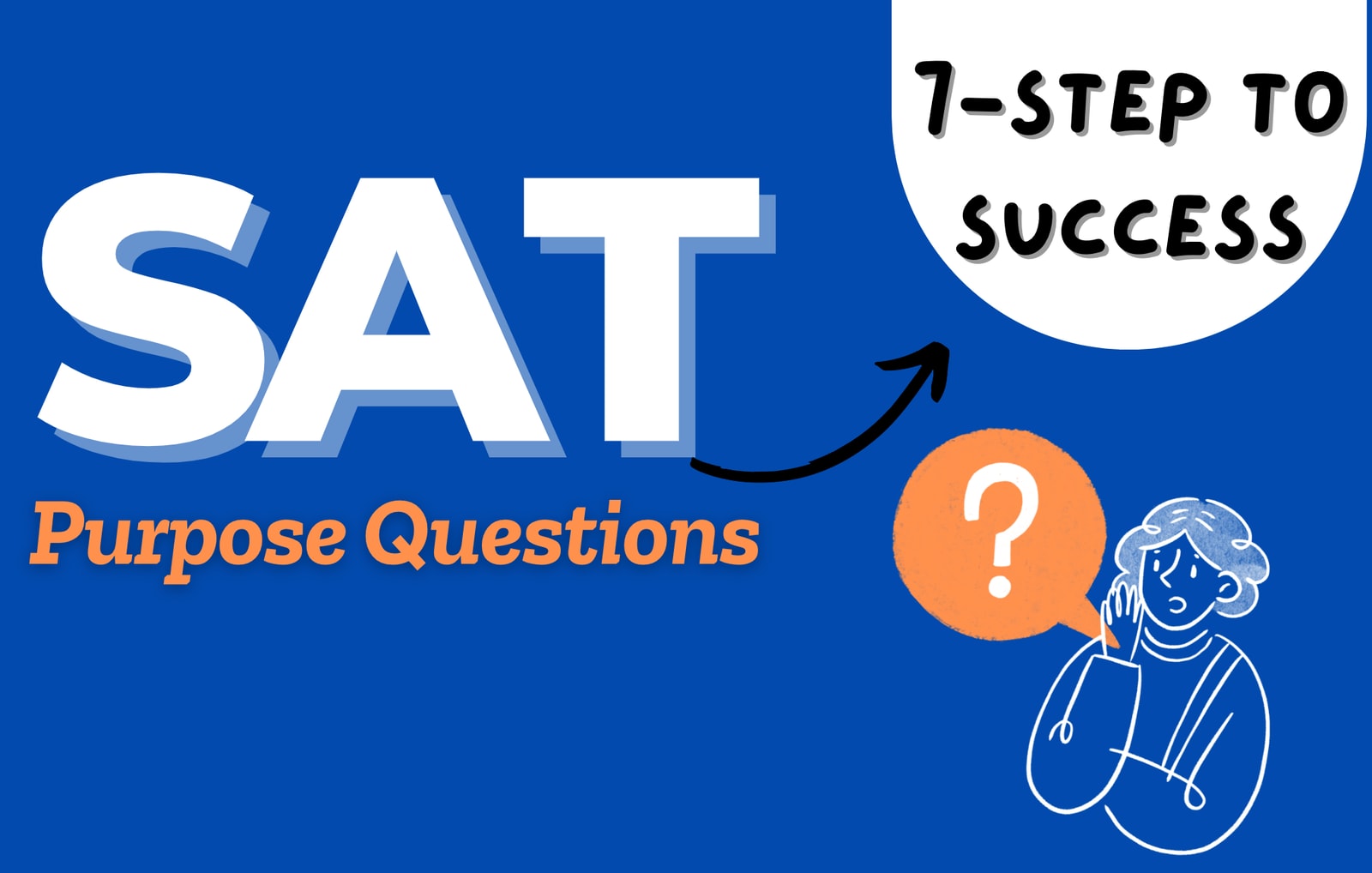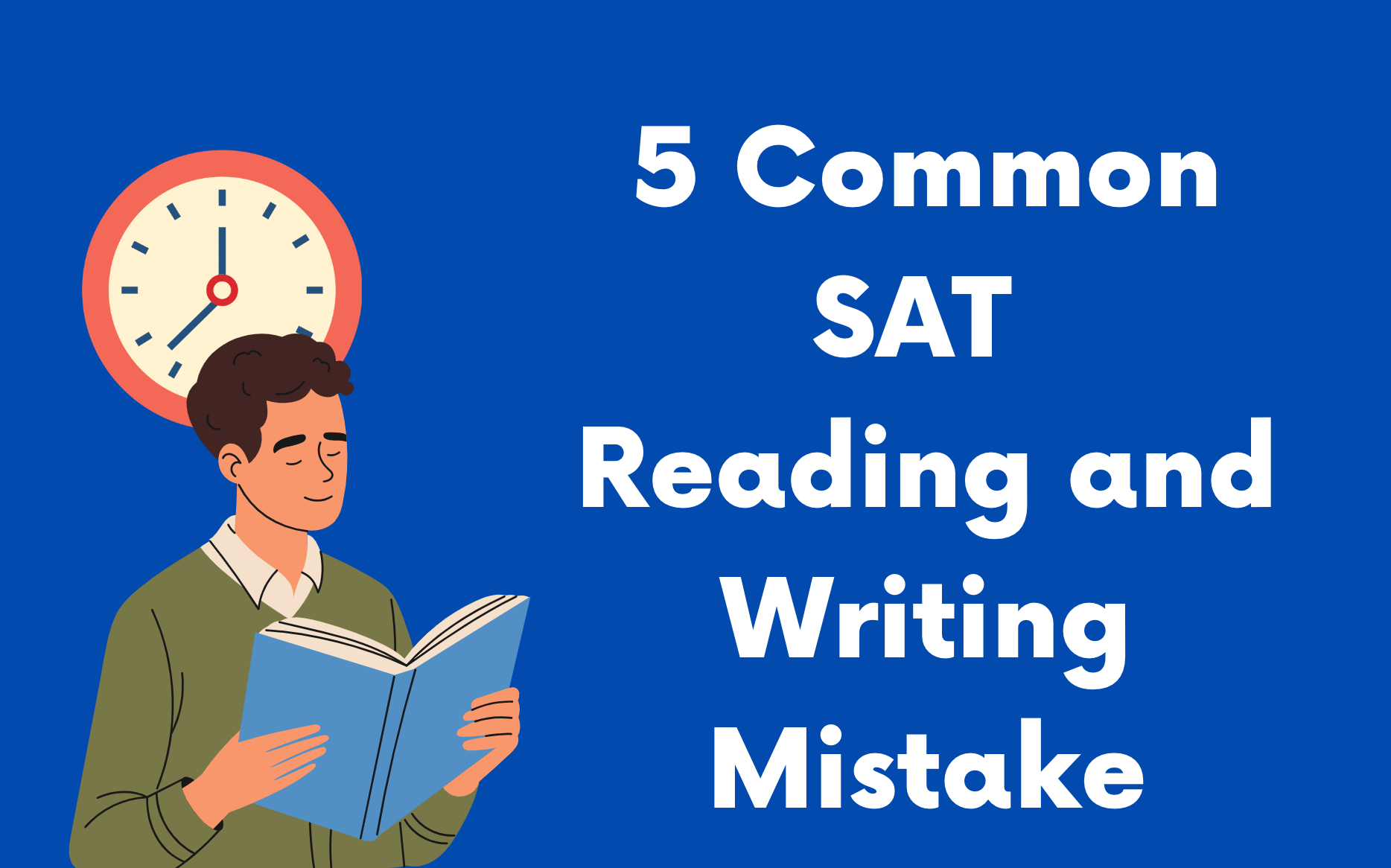Digital SAT Purpose Questions: Learn to Ask “Why,” Not Just “What”
Author
Phoenix Wilder
Date Published

When working through the Digital SAT Reading section, many students find themselves comfortable with identifying facts and summarizing information. But when confronted with a question like, “Which choice best states the main purpose of the text?” hesitation often creeps in. This is because such questions demand a deeper comprehension—not just of what the passage says, but why the author wrote it in the first place. Understanding and handling this distinction is an essential skill for top SAT scores.
Platforms like Best SAT Score are designed to help you break through your score ceiling with proven adaptive practice and expert guidance, so learning how to identify purpose can make a real difference in your results.
Main Purpose vs. Main Idea: Subtle but Crucial Difference
These two question types are closely related but distinct, and confusing them is a common pitfall:
• Main Idea: Focuses on what the passage is about. It asks you to summarize the key point or the overall content.
Think: “What is the central message or topic?”
• Main Purpose: Asks why the author wrote the passage. What does the author seek to accomplish—inform, argue, persuade, challenge a belief, or explain a process?
Think: “What is the author’s intent or goal in presenting this information?”
Illustrative Example
Passage: Recent research shows bats use both echolocation and visual cues to navigate, challenging the long-held belief that bats rely solely on echolocation.
• Main Idea: Bats use not only echolocation but also vision for navigation.
• Main Purpose: To present research that challenges the common assumption that bats rely only on echolocation.
Notice: The main purpose explains why the main idea is being shared.
How to Approach Purpose Questions: Step-by-Step Method
Purpose questions require a careful, active approach. Here’s how to tackle them:
1. Recognize the Purpose Question
These are direct and easy to spot—look for words like “main purpose,” “primary purpose,” “goal,” or “intent” in the question.
2. Read or Review the Entire Passage
Don’t just skim! Pay attention to introductory and concluding sentences, as these often frame the author’s intent. As you read, keep the author’s possible goal in mind.
3. Carefully Read All Answer Choices
The SAT often offers several plausible-sounding answers. Don’t rush—read all four options before making any decisions.
4. Use the Process of Elimination
Incorrect answers often share these flaws:
• Too Narrow: Only one detail or section.
• Not Addressed: Brings up concepts not discussed.
• Wrong Focus: Misinterprets the author’s intent.
• Just a Detail: Not central to the overall goal.
Eliminate options that can’t possibly represent the main purpose.
5. Check Remaining Choices Against the Whole Passage
Don’t select an answer just because it contains familiar words. Ask yourself:
Does this choice truly describe the motivation behind the entire passage, not just a portion?
6. Reread with Your Finalist Choices in Mind
If stuck, reread the passage to see which answer best matches the passage’s structure, tone, and development. Focus on verbs and specific differences. Evidence should fit one answer overall.
7. Select and Confirm
Pick the choice that best encapsulates the author’s overarching goal. If you’re unsure, mark it and review later—sometimes, other questions help clarify your understanding.
Three Key Principles for Purpose Questions
• Purpose Builds on Main Idea: Understanding the main idea is a stepping stone to understanding the purpose.
• Correct Answers Are Often Abstract: The exact purpose might not be explicitly stated, but it fits the whole passage.
• Wrong Answers Usually Stand Out: They’re often too specific, too broad, factually incorrect, or focus on minor aspects.
Examples with Detailed Analysis
Example 1: Art and Creativity
Passage:
Contemporary artist Adrian Hall began with interactive installations using mirrors and lights, letting the audience become part of the artwork. Over time, he incorporated motion sensors and digital screens, creating dynamic experiences that respond to viewer movement. Although Hall has worked with other media, his interactive pieces remain the most well-known.
Question:
Which choice best states the main purpose of the text?
A) To explain why Adrian Hall is best known for his interactive art installations.
B) To describe the progression of Adrian Hall’s interactive art installations.
C) To explain why the use of generative light floors made Hall’s art more popular.
D) To discuss why his other works were less popular.
Analysis:
(A) Focuses on “why best known”—misses the broader narrative.
(B) Details the progression and evolution, fitting the full arc described.
(C) Too narrow: only one technique mentioned.
(D) Focuses on other works, which are not the main focus.
Correct Answer: B
Example 2: Technological Innovation
Passage:
Paul Baran’s work on distributed communication inspired Donald Davies, and eventually, their ideas merged to create ARPANET—the foundation of today’s internet.
Question:
Which choice best states the main purpose of the text?
A) To highlight Paul Baran’s inventions.
B) To contrast the work of two scientists.
C) To describe how the work of two scientists led to a technological innovation.
D) To attribute the internet to telecommunications companies.
Analysis:
(A) Too narrow.
(B) No direct comparison is made.
(C) Describes the combined effect and main message.
(D) Contradicts passage facts.
Correct Answer: C
Example 3: Poetry Analysis
Passage (summary):
In a poem, “Head” mocks “Heart” for being fooled by beauty, but when the subject of admiration appears, “Heart” passionately rebuts “Head’s” logic.
Question:
Which choice best states the main purpose of the text?
A) To describe the effects of Phyllis’s beauty.
B) To underline the fallibility of human emotions.
C) To convey the narrator’s ambivalence.
D) To praise the head for its rational approach.
Analysis:
(A) Too focused on one character’s beauty.
(B) Shows emotion overriding logic—the main theme.
(C) Ambivalence isn’t demonstrated.
(D) The head is mocked, not praised.
Correct Answer: B
Four Detailed Tips for Mastery
1. Always Start with the Main Idea: Use it as a launch pad to uncover the author’s motivation.
2. Support Abstract with Evidence: Make sure the chosen purpose fits the passage as a whole.
3. Use Answer Choices as Tools: Let them guide your rereading—eliminate systematically.
4. Think Big Picture: The correct answer always reflects the intent of the entire text.
Common Mistakes to Avoid
Endless Rereading Without Direction: If you’re lost, use the answer choices to refocus your reading.
Choosing “Too Narrow” Answers: Don’t pick choices that only fit part of the passage.
Matching Words Instead of Meaning: Avoid letting familiar vocabulary cloud your judgment—think about the broader intent.
Practice and Improvement
Developing a solid sense for author’s purpose comes with focused, repeated practice. As you encounter new passages, ask yourself:
• What information is the author presenting?
• What underlying intention guided the way they presented it?
• What broader significance does this serve?
By consistently applying these strategies, you’ll move beyond summarizing texts and start truly understanding their intent—helping you solve SAT purpose questions quickly and confidently.
For structured and targeted digital SAT practice—complete with adaptive mock tests and expert-analyzed question banks—consider using Best SAT Score to systematically improve your comprehension and results.
With these skills and techniques, you’re well-equipped to identify not just what a passage is saying, but why it’s being said. Practicing with a wide range of texts will reinforce this habit of mind, and your SAT reading score will reflect the results.
Related Posts

Struggling with the Digital SAT Reading & Writing section? Discover 5 common mistakes students make and actionable tips to boost your score!

Master the SAT Reading section with essential strategies for big picture questions, enhancing your comprehension and boosting your score.